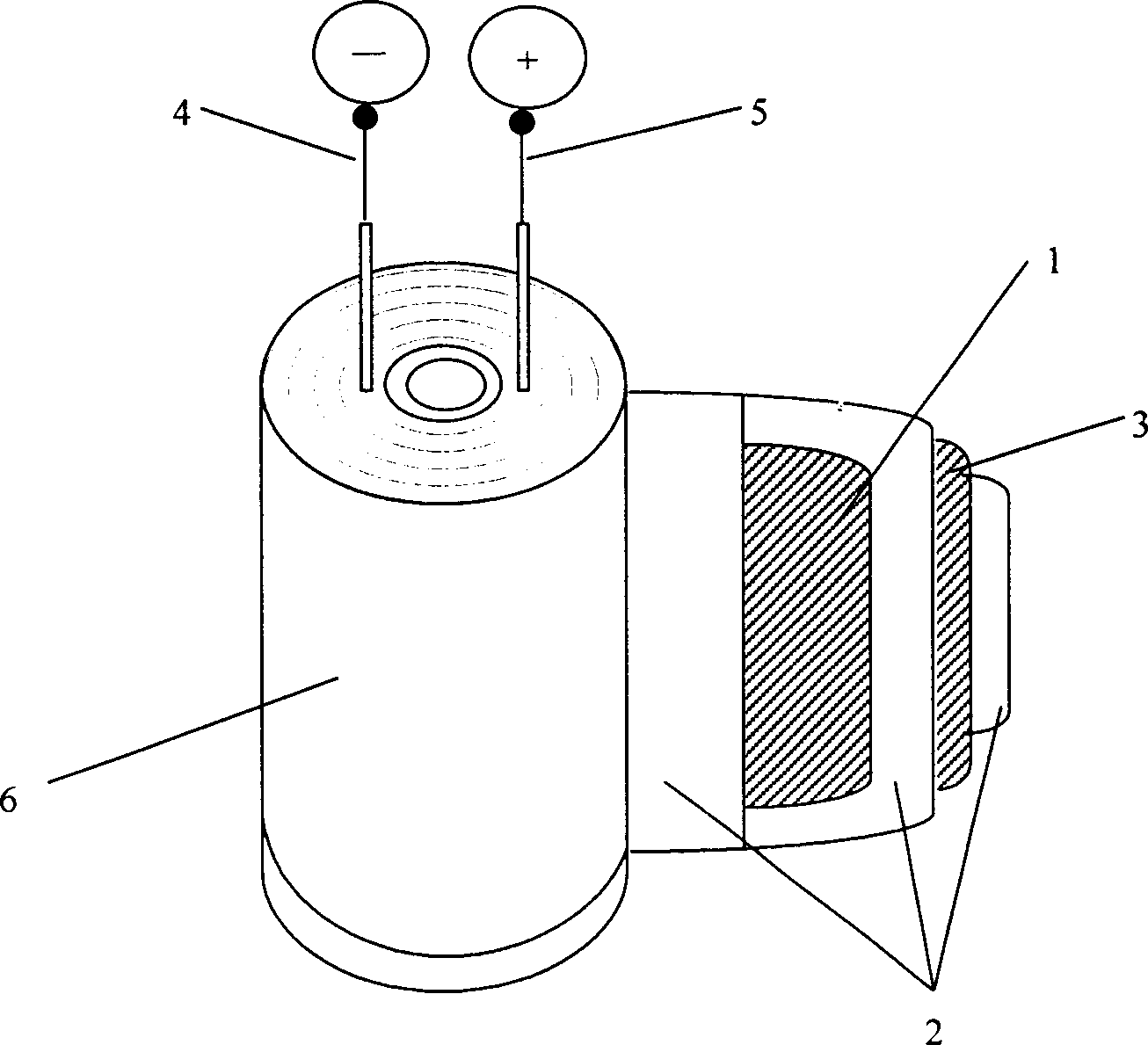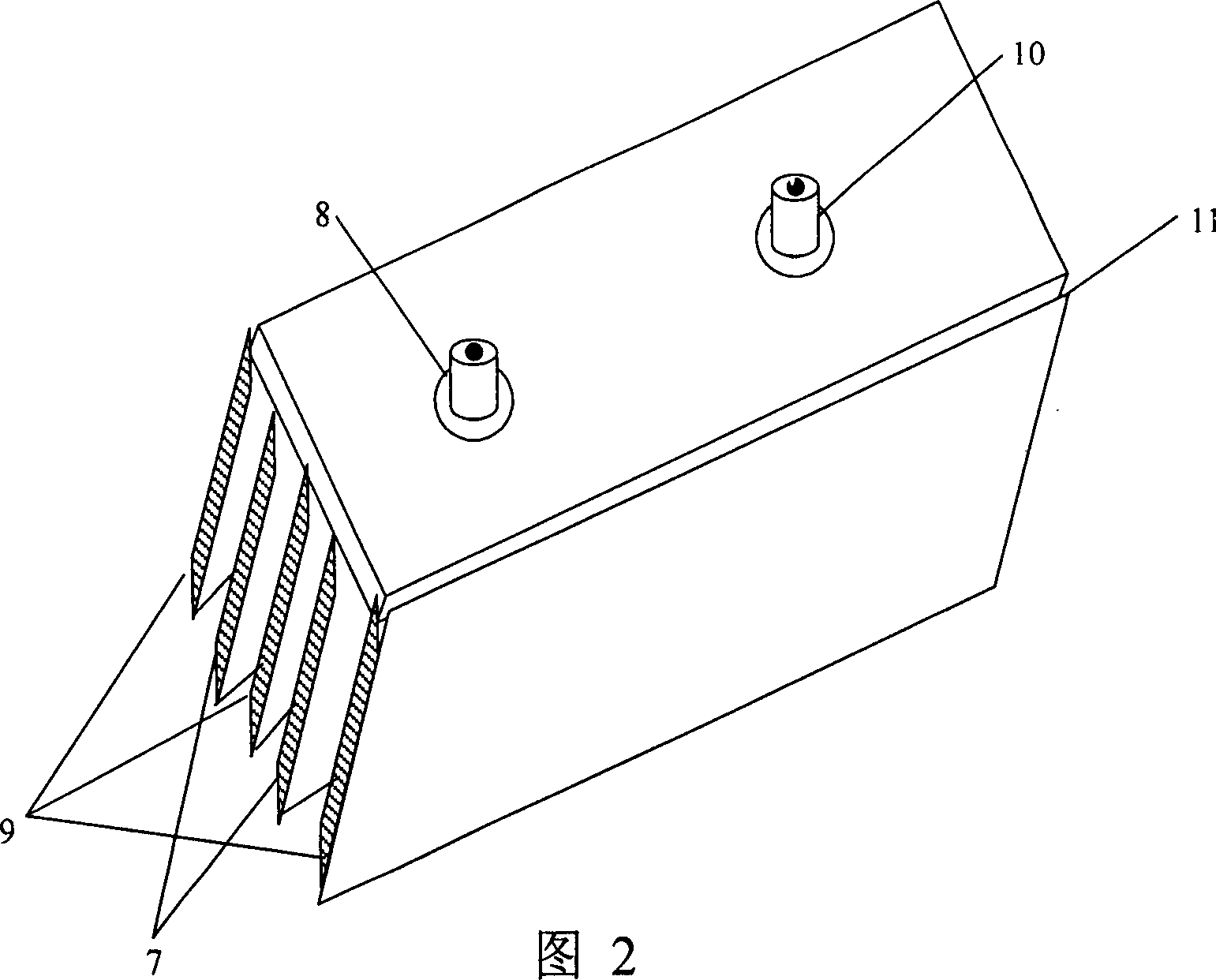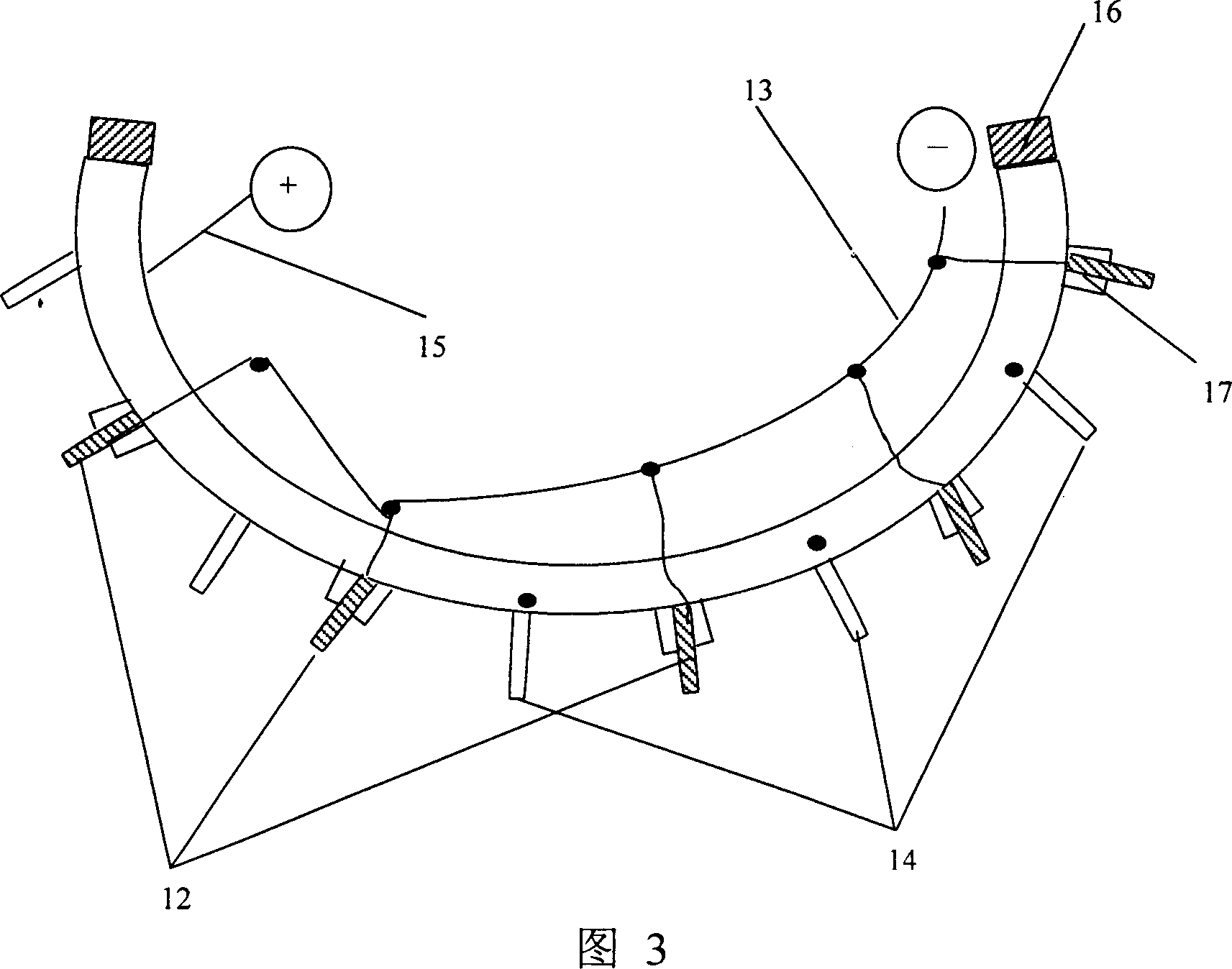Seawater battery
A technology for seawater batteries and conductive substrates, applied in submerged batteries, electrodes of primary batteries, delayed action cells, etc., can solve the problems of limited working range, complex waterproof process, large battery volume, etc., and achieve high working current and environmental protection Good effect, good storage performance
- Summary
- Abstract
- Description
- Claims
- Application Information
AI Technical Summary
Problems solved by technology
Method used
Image
Examples
Embodiment 1
[0017] figure 1 A structural form of the present invention is shown, by figure 1 It can be seen that this seawater battery is a roll-type seawater battery designed for marine life jackets, including a thin-sheet magnesium anode 1, a sponge diaphragm 2, a thin-film silver chloride cathode 3, a cathode lead 4, an anode lead 5, and a moisture-proof outer packaging 6. The thin-film magnesium anode 1 is made of pure magnesium, and the sponge diaphragm 2 separates the thin-film magnesium anode 1 and the thin-film silver chloride cathode 3, and the anode lead 5 and the cathode lead 4 are respectively connected with the thin-film magnesium anode 1 and the thin-film silver chloride cathode 3 , the moisture-proof outer packaging 6 is wrapped on the outside of the cathode and anode materials for sealing and moisture-proof. When the user needs to use it, tear off the moisture-proof outer packaging 6 to let seawater enter the water-absorbing sponge diaphragm 2 between the thin-film magnes...
Embodiment 2
[0019] Fig. 2 shows another structure form of the present invention, as can be seen from Fig. 2, this seawater battery is a kind of rechargeable seawater battery designed for maritime navigation mark, comprises plate type magnesium anode 7, anode lead wire 8, plate type silver oxide cathode 9. Cathode lead wire 10, fixed block 11, plate-type magnesium anode 7 is made of magnesium-aluminum alloy, connected with anode lead wire 8, plate-type silver oxide cathode 9 is made of AgO and Ag 2 O, and connected to the cathode lead 10, the plate-type magnesium anode 7 and the plate-type silver oxide cathode 9 are connected to the fixed block 11 alternately. When in use, put the seawater battery into the sea to generate electricity to drive the navigation lights; the battery can be charged with the electricity generated by the solar battery or the electricity of the tidal wave generator; the experimental results show that the effective area of the cathode and anode is 5.0 cm 2 The tes...
Embodiment 3
[0021] Fig. 3 has shown another kind of structural form of the present invention, as can be seen from Fig. 3, this seawater battery is a kind of rechargeable seawater battery that design replaceable anode plate for sea boat and submersible power machine, comprises plate type magnesium anode 12, anode Internal lead wire 13, plate-type silver oxide cathode 14, cathode grounding wire 15, non-conductive solid support 17 is fixed on the hull 16, plate-type magnesium anode 12 can be inserted and removed on the non-conductive solid support 17, plate-type magnesium anode 12 and anode internal lead 13 connected, the plate-type silver oxide cathode 14 is connected with the cathode grounding wire 15; when the seawater battery is immersed in seawater, it can generate electricity to drive a boat or a diving power machine to work. The plate-type magnesium anode 12 of the seawater battery can be easily disassembled and replaced, and the anode can be used again after being charged, so that the...
PUM
 Login to View More
Login to View More Abstract
Description
Claims
Application Information
 Login to View More
Login to View More - R&D
- Intellectual Property
- Life Sciences
- Materials
- Tech Scout
- Unparalleled Data Quality
- Higher Quality Content
- 60% Fewer Hallucinations
Browse by: Latest US Patents, China's latest patents, Technical Efficacy Thesaurus, Application Domain, Technology Topic, Popular Technical Reports.
© 2025 PatSnap. All rights reserved.Legal|Privacy policy|Modern Slavery Act Transparency Statement|Sitemap|About US| Contact US: help@patsnap.com



